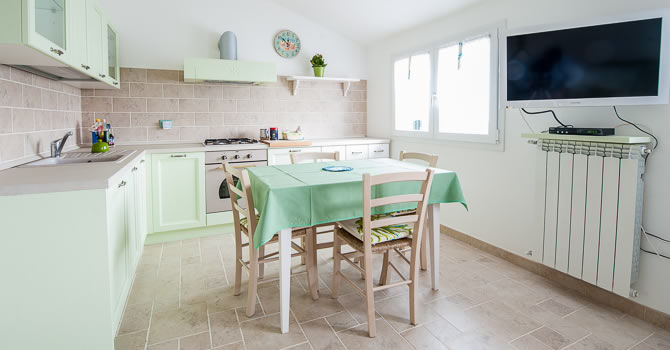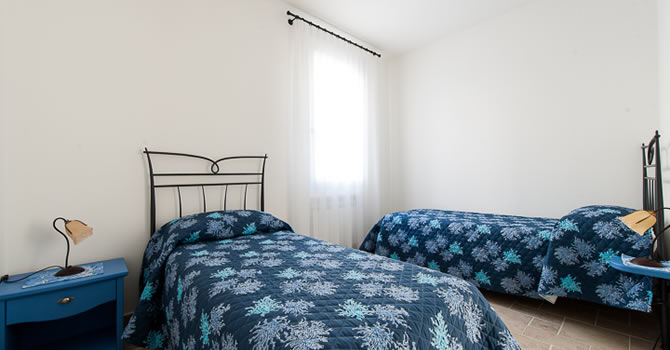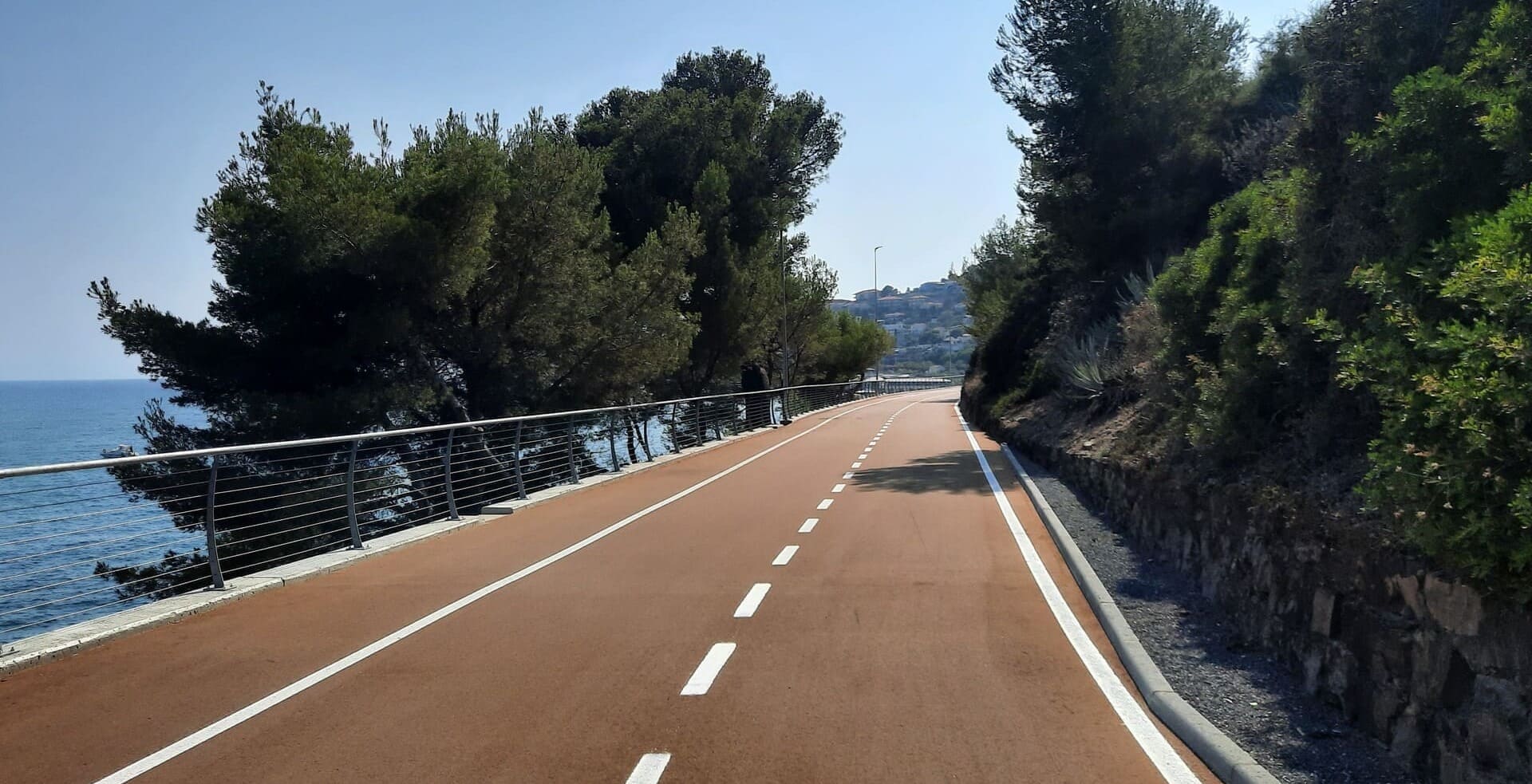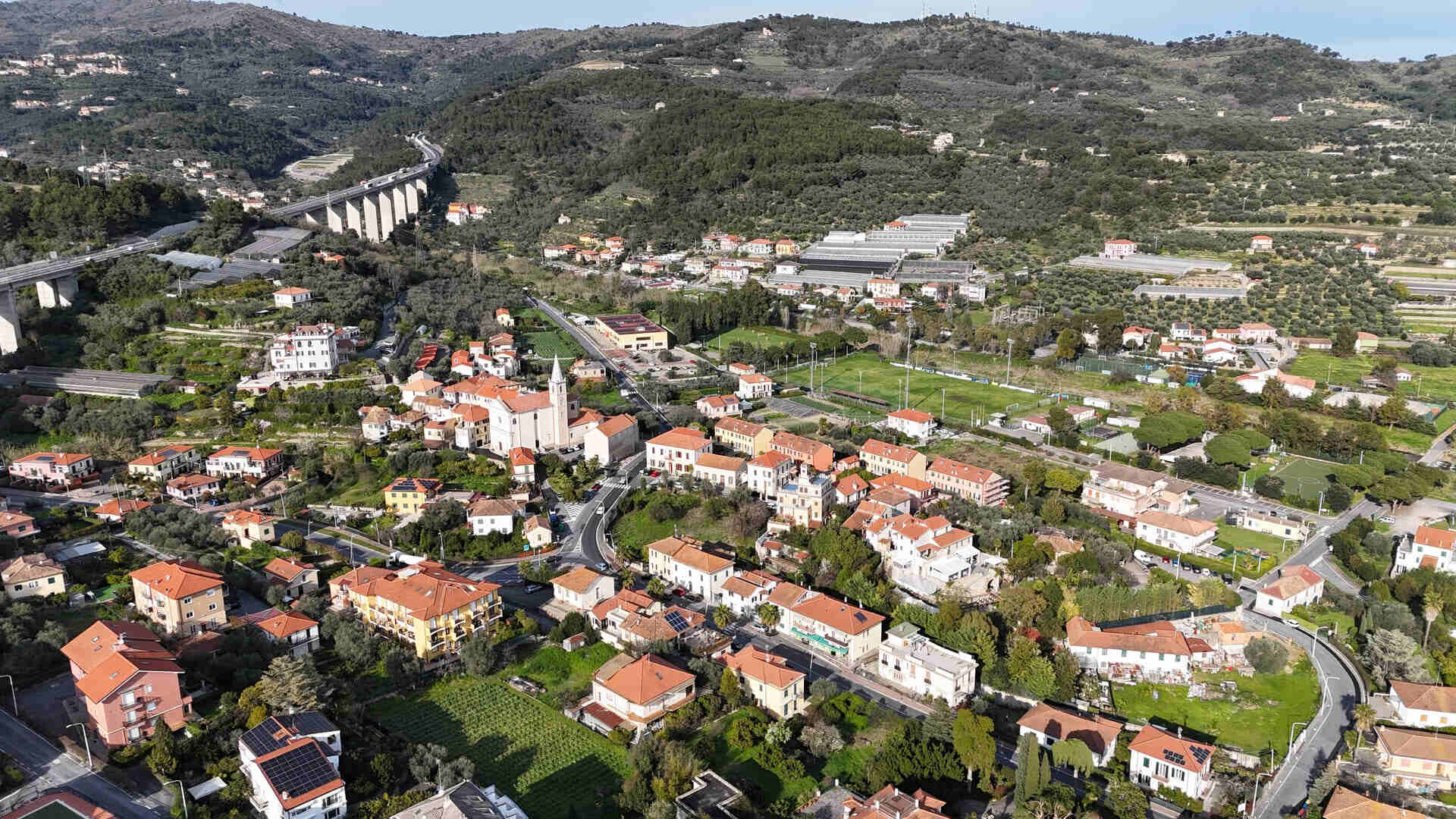
Villages of Liguria
Discovering Noli: a visit to the old town and the castle
November 13, 2022
Considered one of the most beautiful villages on the western Ligurian Riviera, Noli is located in the province of Savona, between Spotorno and Varigotti, in an area known for its many beautiful beaches.
It is also mentioned among the Most Beautiful Villages in Italy thanks to its historic center, characterized by the typical caruggi, the city walls and the castle.
For you a short guide on what to see in Noli to spend an unforgettable day. As you can also see from the map, what we are proposing is a day trip that includes both a visit to the historic center of Noli and a short walk along the path leading to the Castle of Monte Ursino. Part of the route of the climb to the castle traces the famous Liguria Trail and the Coast Path. For more information on the route, you can find an account of one of the stages of the Via della Costa and the Sentiero Liguria (which actually overlap) in the trek from Lingueglietta to Castellaro.
- How to get to Noli and where to park
- What to see in the historic center of Noli
- The Town Hall
- The Town Hall Tower
- The Loggia of the Republic
- Manin Square: Garzoglio House and the Tower
- Porta di Piazza
- Municipal Square
- Tower of the Four Songs
- St. Peter's Cathedral
- Repetto House
- Discovering the village
- The Gates of the City and the Caseforti
- Pagliano House and Portello Fort
- Burgu district and Oratory of Sant'Anna
- Theater Luigi Defferrari
- San Giovanni Tower and Porta San Giovanni
- Church of San Francesco
- Church of St. Paragorio
- What to do in Noli: visit to the Castle of Monte Ursino
How to get to Noli and where to park[ back to menu ]
To reach Noli from Agriturismo Le Girandole (discover all our vacation rentals in Diano Marina) you need to take the A10 highway and exit at Spotorno, or alternatively Finale Ligure. The best solution is to exit at Spotorno, then take Via Aurelia, turning right towards Noli and driving along the state highway for about 3.5 kilometers. In the second case, from the Finale Ligure exit you always reach Via Aurelia and turn left, driving along the state road for about 10 kilometers.
You can park your car near Piazza Lorenzo Vivaldo, not far from the beginning of the Pilgrim's Path on the Noli side.
What to see in the historic center of Noli[ back to menu ]
Walking through Porta Piazza, one immediately enters the heart of Noli's historic center, with the Nolese Loggia, the Palazzo Comunale, the Town Hall Tower, and Piazza Manin.
Although the temptation is to stroll distractedly through the central streets and be attracted by the store signs, we recommend pausing to admire some notable buildings as well.
The Town Hall[ back to menu ]
The present building of the Town Hall derives from a long series of transformations that have taken place since the 1400s. Inside the council hall are preserved some ancient relics found as a result of recovery operations, Among them:
-
a 'cinerary urn from the 3rd century A.D.
-
the ancient chalice for council voting
-
the town crier's trumpet and flag
-
some religious frescoes from the 14th century, detached from the walls of the gate of St. John's
-
the last flag of the Republic of Noli, with effigies of Our Lady and patron saints Eugenius and Paragorio

The Town Hall Tower[ back to menu ]
The Town Hall Tower, dating from the 13th century, towers majestically over the square at 33 meters high. Like most of the buildings in the village, it too traces the characteristic structure consisting of a basement of squared green stone ashlars and a brick upper part, with Ghibelline battlements at the top.
Inside the tower is a bell, formerly used both to mark the hours and to sound the alarm in case of danger or calamity, but also sometimes used at town celebrations.
The Loggia of the Republic[ back to menu ]
Overlooked by the Palazzo Comunale, the Loggia della Repubblica, dating from the 14th-15th centuries, can be recognized by its two large brick arches resting on an octagonal column with ashlar capitals typical of the late 14th or early 15th centuries.
Marble plaques are visible on the walls of the loggia, narrating the events and prominent figures of the city:
-
Giordano Bruno, who stayed here to "teach grammar to putti and reading the sphere to certain gentlemen"
-
Anton da Noli, a native of Noli and discoverer of the Cape Verde archipelago
-
Dante Alighieri, who mentioned Noli in the Fourth Canto of Purgatory
-
Christopher Columbus, who sailed precisely from Noli on his way to Flanders
-
a decree of the Maggior Consiglio, dating back to 1666, requiring foreigners "...to deposit arms before entering the city and to prove, in the event of a stopover, that they have enough money for their subsistence,valued at at least 300 scudi...."

Manin Square: Garzoglio House and the Tower[ back to menu ]
Piazza Manin in past times represented the center of commerce in the village. Dating from the late Middle Ages, Casa Garzoglio consists of a Tower, from the 13th century, and a brick house, from the 14th century, with a loggia that was originally open to the street.
Also still visible is the loggia where the town market was once held, in what was the "Raiba" building.
Testimony to the prestige and nobility of the nolese families is Casa Maglio, a tower-house with a stone base and a fine door through which the dwelling was accessed.

Porta di Piazza[ back to menu ]
Porta di Piazza was the main gateway to the village, and was part of the second city wall built between the 12th and 13th centuries. On the pediment can be seen a painting by Vincenzo Suarez (1787), depicting the Virgin and the patron saints Eugene and Paragorio, and later restored by the painter Giovanni Rovero in 1924.

Municipal Square[ back to menu ]
The municipal square represents the center of town activities. In the past there was a large well right in the center of the square, and a sumptuous staircase leading to the entrance of the Town Hall.
Later, at the time of the republic, gatherings of the people were held here, who gathered every year on the feast of Saint Lucy in the presence of the Madonnina della Piazza to elect the Consuls and the Podestà.
Today its appearance is very different from what it once was, but the emblems of the Ancient Maritime Republics of Noli, Genoa, Amalfi, Venice and Pisa are still visible.
Tower of the Four Songs[ back to menu ]
The Quattro Canti Tower is 38 meters high and dominates the entire historic center. It has a trapezoidal base and its entrance now houses a commercial space. Similar to the other city towers, it has a green stone base and brick facing.
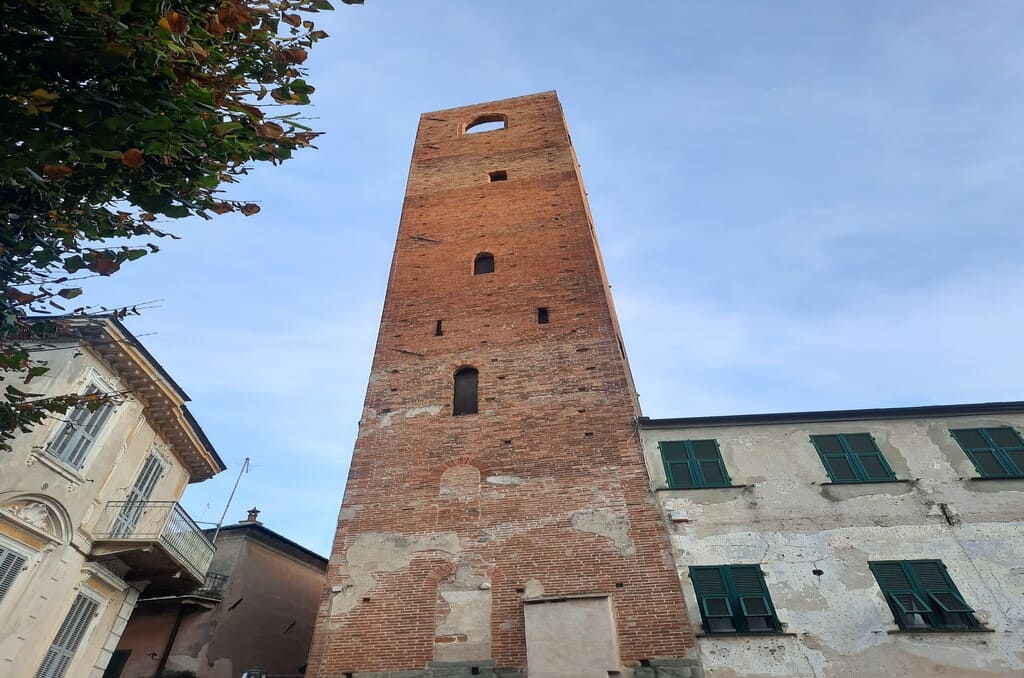
St. Peter's Cathedral[ back to menu ]
St. Peter's Cathedral dates back to the 13th century and was originally a small chapel dedicated to Peter of the Fishermen. It was enlarged and restored in the 16th century, later becoming the Cathedral of the Diocese of Noli in 1572.
Inside you can still admire a carved marble sarcophagus remano, called the Ark of St. Eugene because it was used to house the relics of the patron saint. Also notable are the 17th-century pulpit and Bishop's Chair, made of polychrome wood with gilded details, with Giovanni Battista Maragliano's depiction of the Annunciation.

Repetto House[ back to menu ]
Immediately to the right of the Cathedral is Casa Repetto, from the 12th-14th centuries, consisting of an older element, namely a tower, dated to the end of the 12th century, with a large basement made of green stone ashlars, and an upper brick structure with three-mullioned windows on the second floor and mullioned windows with two lights on the second.
Next to the tower we find a building with a loggia, now closed, dating from the 14th century.
Discovering the village[ back to menu ]
The entire village of Noli, as well as the historic center, is rich in monuments and places of interest that still show historical elements that tell of the town's past.
The Gates of the City and the Caseforti [ back to menu ]
Noli still presents itself today with a structure composed of caseforts and gates to the historic center.
In fact, originally the town was protected by a city wall, with only three openings on the sea side: Porta Viale to the east, Porta di Piazza in the center and the Portello to the west. Within the walled city were a number of buildings, named caseforti, positioned on the corners in strategic positions to control the streets.
They can still be recognized today by their high basement made of local green stone ashlars and their raised entrance from the street, with portals with lunette lintels.
Pagliano House and Portello Fort[ back to menu ]
Casa Pagliano, dating from the 14th century, is named after its owner and still has some typical elements of Noli's medieval private dwellings, particularly the high basement in local green stone, with a brick upper part with elegant three-mullioned and mullioned windows with two lights.
Next to the house can still be seen the remains of the fortification of Forte del Portello, now partly encompassed by a tree. It was built in 1565 and later connected to the Torre dello Sperone, also known as "delle forche," located on the beach to defend the harbor.
Both the arch and the tower were demolished in the early 19th century to build the present Via Aurelia.

Burgu district and Oratory of Sant'Anna[ back to menu ]
The Oratory of Saint Anne is a Baroque-style building recognizable by its unfinished facade, built to house the headquarters of the Brothers of Saint Anne. Inside it appears very bright, with fine decorative stucco on the bays and processional chests of St. Anne and the Risen Christ placed in special niches.
The 18th-century stools and Vincenzo Suarez's work, the "Holy Family," placed above the altar are valuable. Embellishing the sides of the oratory are six canvases by Giuseppe Bozano (1842), including one depicting "The Translation of the Relics of St. Eugene" from the Islet of Bergeggi to the Church of St. Paragorio.
Finally, two crosses with the dying Christ richly adorned with gilded leaf motifs are admirable, and these are still carried by the faithful on occasions of votive processions.

Theater Luigi Defferrari[ back to menu ]
The Luigi Defferrari Theater is named after the benefactor who, in 1923, who underwrote the purchase costs to support the Cooperativa Nolese Amici dell'Arte. During the period of occupation by Napoleonic troops it was used as a cellar and shelter for army horses. Today it hosts numerous events of historical and cultural interest every year.
San Giovanni Tower and Porta San Giovanni[ back to menu ]
The 22-meter-high Tower of San Giovanni is distinguished by the fact that it slopes about 80 centimeters toward the sea. It was built in the 13th-14th centuries on a pre-existing walled enclosure, of which the elegant bridge connecting it to the tower of St. Anthony was also part.
Along the ancient mule track, now Via Monastero, the remains of two religious buildings from the late medieval period are still visible: the Church of St. John, also known as the Church of the Knights of Malta, and the Monastery of Santa Maria del Rio, where an ancient well still stands.

Church of San Francesco[ back to menu ]
Located in Piazza Lorenzo Vivaldo (where we parked the car) it is possible to pause and admire the Church of San Francesco, dating from the 13th-15th centuries, and later enlarged in the 1600s. Inside are numerous tombstones, dated between the 14th and 17th centuries, a wooden crucifix from the 15th century and a painting depicting the Madonna and Child, Calvary and Saints, from the 15th-16th centuries.
Church of St. Paragorio[ back to menu ]
Not far from the Church of St. Francis is the Church of St. Paragorio, which is not currently open to visitors. The church is of Proto-Romanesque origin, dating from the 11th century, and considered one of the architectural jewels of northwestern Italy, so much so that it has been declared a national monument. Inside it is enriched by 15th-century frescoes, a crypt still intact, and wooden statue, known as the Holy Face, representing a 12th-century Eastern-style crucifix.
A number of stone sarcophagi, discovered during restoration and rehabilitation work in the area, are located in the outdoor garden. A rich necropolis and the perimeter walls of the former religious complex were also found during excavations in 1972.

What to do in Noli: visit to the Castle of Monte Ursino[ back to menu ]
It takes about 25 minutes on foot to reach Noli Castle from Chiappella Square. The route initially overlaps with the Liguria Trail and the Via della Costa Trail, crossing the ancient Papona Tower and Papona Gate, built in the late 13th century at the point where the ancient city walls opened upstream side.
From the Papona Tower to the Bishop's Palace of Noli
The tower was formerly used as the Republic's weapons and ammunition depot.

A few meters from Porta Papona is the Church Nostra Signora delle Grazie, past which the view opens to the Gulf of Noli to the right, Spotorno and the islet of Bergeggi to the left. On both sides of the coast stands out the Castle of Monte Ursino.
To reach the castle there is a choice of two paths, both of which pass through beautiful, typically Mediterranean vegetation. The first is an ancient mule track partly carved into the rock. The second, which is certainly easier, has porphyry block paving and passes in front of the beautiful monumental architectural complex of the Bishop's Palace, crossing terraces and strips, once cultivated, and from which the remains of ancient dwellings from the 10th-11th centuries emerge.
Before reaching the castle one can pass through the Noli cemetery, or pass outside the perimeter. At the entrance to the cemetery we find the memorial to the fallen of the First World War.
We then continue with the climb, which is not strenuous and rather pleasant, and a 5-minute walk from the cemetery we finally arrive at the Castle of Monte Ursino, it is possible to see the entire city wall that descends to a few meters from the extremely impressive Papone Tower.

Admission to the Castle of Monte Ursino costs 2 euros and dogs are also allowed. In the winter months it is open only on Saturdays and Sundays from 10 a.m. to 5 p.m. The facility is managed by volunteers from the Historical Group "La Medioevale" of the Cultural Association "Gli Aleramici" and volunteers from the Historical Center "Civitas Nauli" under the patronage of the municipality of Noli.
A tour inside the Castle of Monte Ursino in Noli
The tour of the castle takes about 30 minutes. Inside we find a whole range of armor and helmets, as well as a model of the castle and one of the town of Noli. It is also possible to take a photo wearing a shield and sword. We continue the visit by walking along the walls, from which you can admire the view of Noli, Spotorno and Bergeggi, and venturing into the various internal walkways. The tower unfortunately cannot be visited.
Listen to all podcasts published on our official channels:
